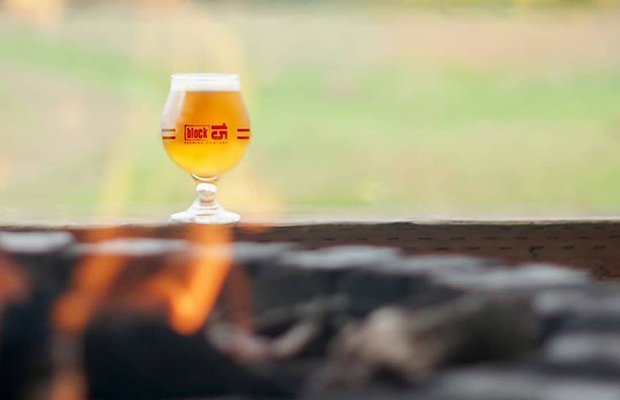
Releasing cellar beers and hosting a cellar beer event are ways to connect with your most die-hard beer aficionado customers, but what goes into ensuring the beers and the release are successful?
Forethought and planning are key if a brewery wishes to sell cellar beers and host a cellar beer event, said Warped Wing Brewing Company brewmaster John Haggerty, whose brewery is hosting a “Cellarbration” event on Saturday at its Springboro, Ohio location.
“Obviously, you would typically not age a ‘regular’ beer like this as most folks know that aging beer generally doesn’t do it any favors,” Haggerty said. “But with barrel beers they have been built for this sort of thing. The micro-oxidation that the beers experience in the barrels plays well with the maillard complexes in the base beers and helps to round out the flavors over time and can really bring a new dimension to the beer as time progresses.”
The beers were barrel aged and packaged and have been stored in a cold cellar — approximately 45-48 degrees Fahrenheit — the whole time. The bottles are kept in their cardboard boxes to minimize exposure to light. Still, quality control remains important.
“The main thing when we are bottling anything that has been in a barrel -— whether we are planning on aging it or not — is that we run our full QC protocol on it to try and ensure that there isn’t a micro problem. If we are solid here then we typically are in good shape. This is important for all beer. Especially ones that we are going to age or that one of our patrons might age on their own. Beyond that, it is really about the production team doing their jobs to the best of their ability.”
Nick Bowman, head of sales and marketing for Warped Wing, said they decided to be selective for the event, selecting specific vintages that showcased a variety of styles and barrel types for customers to taste.
“We were going to open up the entire library but the number of beers could have been overwhelming for people,” Bowman said. “Plus we are debuting four brand-new barrel-aged beers for this event.
“So it’s a good balance of new and vintage offerings. For the majority of the selections we went back a minimum of three years in the library and as far back as 2015. There were some specific exceptions from 2020 and 2021 due to COVID’s impact on those two years and their original releases.”
Warped Wing is “pretty intentional” with its library selections, Bowman said. It has minimums it holds back for library aging before the beers hit the market but sometimes some beers that are doing especially well are reactively put in the cellar for storage.
“That was the case with the 2015 vintage of Esther’s Li’l Secret Milk Chocolate Brown Ale,” Bowman said. “That was arguably the most popular year in that collaboration series of annually changing styles with local candy maker, Esther Price Candies. So it’s a little bit premeditated, but also based on some reaction in the market.”
The beers were bottled or kegged prior to their original releases. All of the library beers are stored in Warped Wing’s temperature controlled cooler for the entirety of their slumber until they are ready for an event like “Cellarbration.”
A taste test is conducted to make sure the beers going before the public are ready for prime time, Haggerty said. If the beer is solid going into the package it should remain so, at least from a microbiological stand point.
“The non-microbiological issues that come with aging are more organoleptic,” he said. “We sample the packaged beer before the event and ensure it is still tasting good. If it is, then the assumption is that the draft is fine as well.”
The risk associated with storing older vintages affects the price point.
“Yes, sometimes things need to be dumped out,” Haggerty said. “It happens. It’s unfortunate, but that is the reality of how this works. It is also why you will see the pricing on these beers migrate up.
“The brewery has taken a risk on itself not selling the beer with the rest of the batch when it first comes out so there is a carrying cost to that but there is also the inherent risk that the beer falls apart over time and has to be dumped. Therefore, the beer that makes it has to financially cover for the beer that doesn’t.”
Added Bowman, “More often than not we have some really great offerings that have mellowed over time showcasing a great balance of the base beer and the barrel character. I think that is why people age beers like this and why this event is so special.”






Be the first to comment